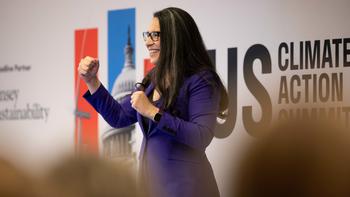Opening statement: Tuesday, 27 July 2021
Thank you Chair. I’m supported today by my Chief Operating Officer, Kylie Macfarlane who looks after our disaster recovery and resilience teams.
By way of introduction, general insurers provide Australians with 43 million business and household policies each year and pay more than $166 million in claims every working day.
Over the last year we provided support to Australia’s export industries to the amount of at least $500m dollars in gross incurred claims.
Insurance is a key component of the economy, especially in a country like Australia, where our natural peril risks are a constant reminder of the challenges we face in protecting our assets.
Insurers are proud of the way we have supported the growth of our nation, from our largest exporters to underwriting Australian’s homes, contents, small businesses and cars.
The nation’s economic recovery following the COVID downturn has included lower unemployment and record levels of investment.
Unfortunately, not all sectors of the economy are performing as strongly, and the general insurance sector is currently enduring its most challenging circumstances in nearly two decades.
Insurer profitability over the last 24 months, ending March 2021, was down 64 per cent on the preceding two years.
According to APRA, the entire general insurance sector only made a profit of $19 million dollars in the most recent March quarter, largely because of the impact of recent natural disasters and in provisions undertaken for potential pandemic claims.
While over the last 18 months the Australian community has been focused on the pandemic, since the devastating bushfires of 2019, we’ve also endured three major flood events, a category 3 cyclone, three destructive hailstorms and a bushfire in the Perth Hills.
Over the past three years, insurers have paid out more than $7.4 billion dollars in natural disaster claims, with more than $5.6 billion dollars paid out since the 2019 bushfires.
Australian insurers are also impacted by global trends which influence underlying costs-in particular, the cost of reinsurance.
Insurance is a globalised financial service and is currently in what is described as a hardening market, meaning reinsurance pricing has increased, and, in turn, this is impacting the cost of premiums locally.
Insurers are well aware that the availability and the affordability issues of some lines of insurance for small and medium businesses have become challenging – and this includes SMEs in our export sector.
We are very aware of the impact this market environment is having on particular sectors.
In many of these categories, insurer profits are under pressure with gross loss ratios running at near or more than 100 per cent. So in this context solutions are often difficult to determine as more money is being paid out than what is being collected in premiums.
A range of inquiries and reviews over the past decade have put forward various recommendations on how to address these.
In November last year, the ICA engaged former insurance executive and regulator John Trowbridge to undertake an independent review and identify potential solutions to these affordability and availability issues.
His paper was released earlier this year for public comment, and we are engaging with key stakeholders, such as COSBOA and other specific industry associations, to continue to work through these important but complex issues.
With this consultation paper on commercial insurances, a dialogue with stakeholders representing different SME sectors has started.
There is no single silver bullet for resolving these issues, but we are serious about grappling with them for the benefit of small businesses and the broader economy.
We are engaging with government, regulators, policy holders, industry groups and consumer groups to understand where we can find sensible actions moving forward over the short, medium and longer term.
Turning to the topic of climate change, there is a growing recognition by companies, investors and regulators that climate presents a significant set of financial risks as well as opportunities.
Insurers have been looking at how to balance the requirements of regulators, investors and the overall global insurance environment.
Central banks and financial regulators globally now widely acknowledge that climate change is a source of financial stability risk.
Our industry is aligned with the regulatory guidelines on managing the financial risks of climate and we recognise that our regulators are keeping pace with the global standards.
We will continue to heed the guidance of our regulators and manage liability risks accordingly.
In Australia the emphasis in the immediate term has been on addressing the physical risks associated with a warming climate.
Climate change in Australia means more intense and frequent natural hazard events and more loss events, as re-insurers can clearly evidence.
To mitigate these physical risks, we have been collaborating with all levels of government to protect Australians through implementing projects to drive more resilient built environments, especially against cyclone and bushfire risks.
We are working with Federal Government to see these resilience projects replicated and scaled through the National Recovery and Resilience Agency.
We stand ready to provide data to Government on where investment in resilience and mitigation will provide the maximum benefit as well as bring down pressure on premium pricing.
We’re happy to take any questions from the committee.








